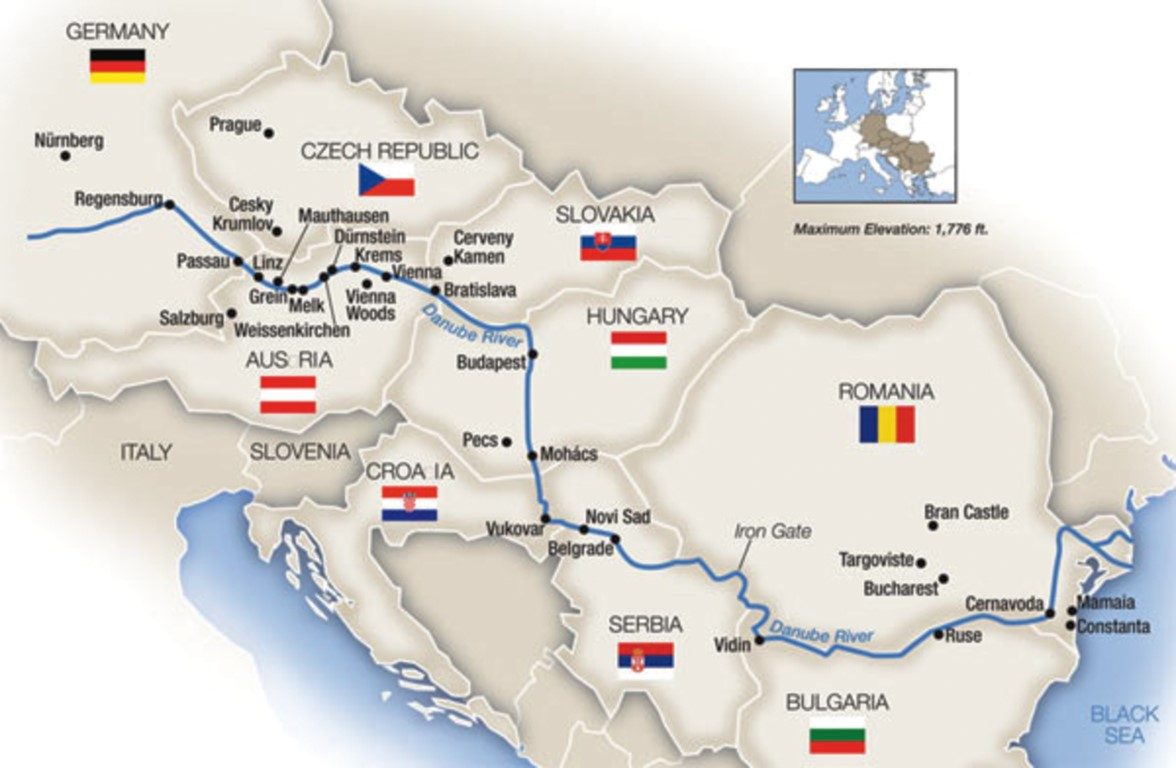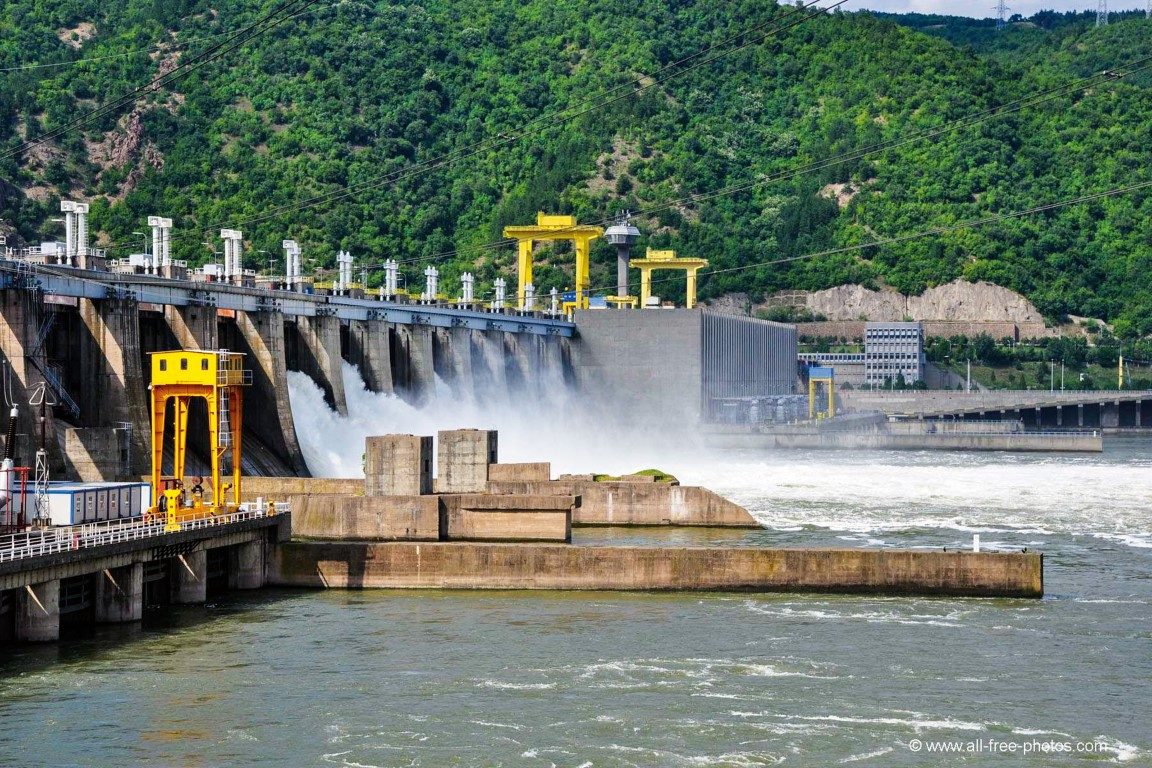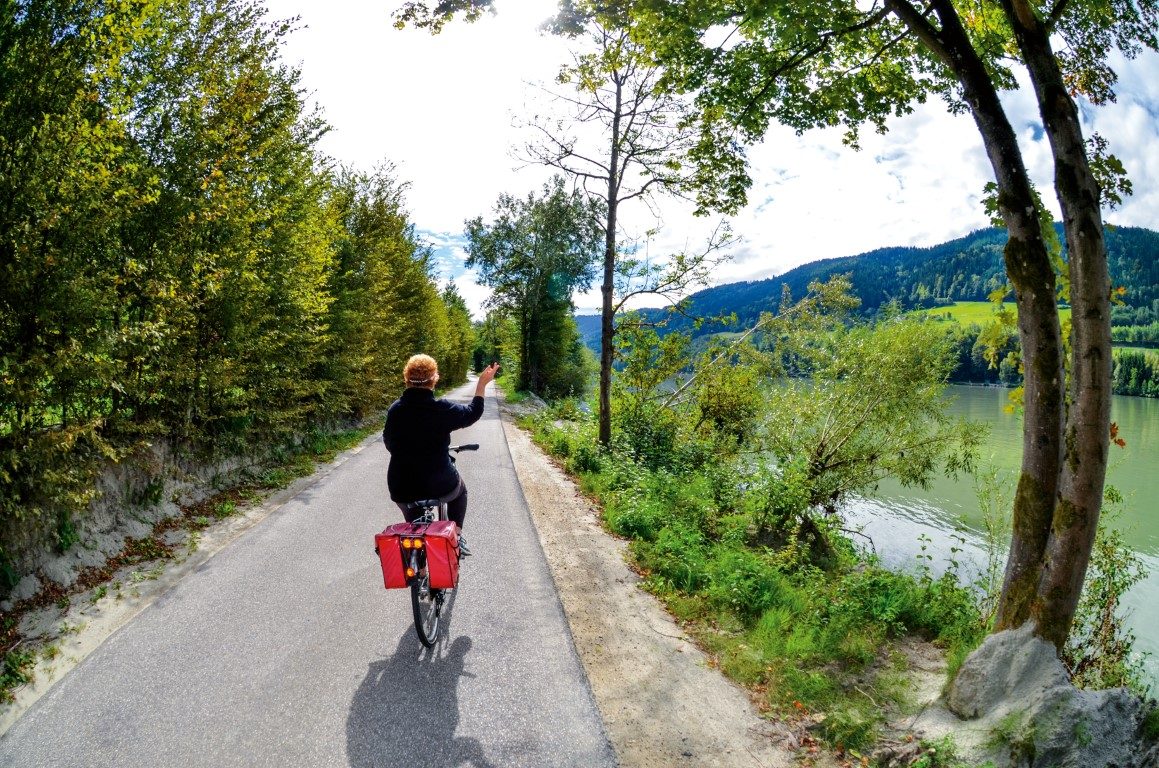

Other than Africa’s Nile, it’s hard to pick a river that’s been more instrumental in advancing humanity’s scientific, industrial and cultural evolution than Europe’s Danube. But though it’s shaped the destinies of nations and empires for centuries, it now seems the mighty river may be in trouble.Story by Lawrence Schaffler.
In January this year a Ukrainian cargo vessel ran aground on the Danube where the river runs through northern Bulgaria. Refloating her took days, a hiccup that created a major bottleneck because it forced an abrupt halt to marine traffic voyaging up- and downstream.
The incident had nothing to do with the skipper’s carelessness or sobriety. The unusually low level of the river was to blame. It’s a growing problem for barges, cargo vessels and small ships – as well as for the river’s frenetic tourism industry, where scores of flat-bottomed ships carry thousands of happy sightseers along the river every year – between Amsterdam in the northwest and Budapest in the southeast.

Exceptionally dry summers in Europe are increasingly common. And that’s exacerbated by disappearing glaciers in the mountain ranges that feed the tributaries feeding the Danube. Smaller (now non-existent) glaciers release far less water.
While Europe’s climate cycles between wet and dry periods as it does everywhere else in the world, the increased incidence of unusually dry summers is having a major impact on the river’s maritime traffic, posing a growing threat to much of Europe’s trade, commerce and tourism sectors.
In 2018 Pavlin Tsonev, the executive Director of the Agency for the Exploration and Maintenance of the Danube River, bemoaned the dry summer which had kept the region rainless for three months, reducing the flow of water in the tributaries feeding the Danube. He compared it to the dire situation in 2003, where water levels at Rousse (Bulgaria’s fifth biggest city) recorded a value of ‘-1’ – almost a metre below the minimum level for safe navigation.
But similar low-level problems occurred in 2011, 2014, 2015, 2017, 2018 and 2020 – ominously, the last extended into the region’s wet winter months. In 2014, water levels were too low for many ships to pass between the German cities of Passau and Regensburg – a section of the river which usually enjoys plenty of depth. In the 2015 drought the river fell to alarming levels – the 1,075km stretch of water in Romania was worst-affected, where the water level was 90cm at Galati, nearly 5m below the standard ‘warning’ levels.

To facilitate more reliable water levels (and more reliable electricity), the Danube features 15 locks – five in Germany and 10 in Austria. Proposals to build new locks for better navigation have stalled, mainly because of environmental concerns.
To deal with these problems freight shipping companies are sometimes forced to adopt desperate measures – for example, loading their barges to only 25% of capacity to reduce draught. In some years authorities have banned large vessels from operating entirely – to avoid the risk of these running aground and creating a bottleneck. Another strategy sees bigger vessels elect to berth in deeper ports, their cargoes transferred to trains and trucks for delivery to the final destinations.
On occasion low water levels also present unexpected navigational hazards. In Prahovo, a harbour in Serbia, the remains of WWll German shipwrecks emerge as the river level falls. The Germans scuttled a fleet here in the summer of 1944 to prevent the cargoes of ammunition falling into the hands of the advancing Russians and partisans.
An estimated 22 such wrecks lie on the Serbian riverbed – more than a hundred lie on the Romanian side. Experienced skippers give these wrecks a wide berth, but with reduced draft and a narrower river, manoeuvring room is significantly compromised. Skippers are also wary of dropping anchors in some areas of the river running through Serbia – it’s thought these contain unexploded bombs from NATO airstrikes in 1999.

A drying river is especially troubling for the countries that rely heavily on it for drinking water, irrigation, transport and electricity. At 2,850km, the Danube is Europe’s second-longest river (after Russia’s Volga), rising in Germany’s Black Forest and emptying into the Black Sea.
It’s also the world’s most ‘international’ river, passing through or beside 10 countries – Germany, Austria, Slovakia, Hungary, Serbia, Croatia, Bulgaria, Moldova, Ukraine and Romania – and its catchment area extends into 17 other countries.
But the Danube’s survival also impacts indirectly on many European countries. Following the completion of 171km Rhine– Main–Danube Canal in 1992, the river effectively connects the Port of Rotterdam – and many of Western Europe’s industrial centres – with the Black Sea.
Barges travelling the river carry an enormous variety of freight along the route, including grains, steel, coal, fertiliser and oil products, and when water levels fall things go wrong quickly. In 2018 the big dry severely compromised the delivery of fuel supplies to Germany’s Rhineland region – several petrol stations ran dry.

Approximately 20 million people rely of the Danube for their drinking water – and it generates a fair chunk of the region’s electricity. More than 700 dams have been constructed on the Danube and its tributaries in various European countries.
A drying Danube does not auger well for Europe.
TOURISM
A much more ‘visible’ illustration of a drying Danube is the region’s tourism sector – as with commercial freight operations, the shallow-draught cruise ships travelling between Amsterdam and Budapest are severely affected when sections of the river become too shallow. In 2018 the water level around Hungary’s Budapest receded to 0.61m, just above the record 0.51m low of 2003, according to that country’s National Water Authority.
Understandably, these disruptions often leave passengers more than a little disgruntled. What was billed as a two-week cruise along the most romantic of rivers – with stopovers in iconic cities such as Vienna, Prague, Bratislava and Budapest – has sometimes morphed into a stop-start journey involving bus/ train trips and inconvenient transport changes to bypass the river’s shallow sections.

Still, there are others ways to experience and explore the Danube. One of the best is by bike. There are bike tracks all along the river, from its source in Germany’s Black Forest, to the Delta in Romania. There are also scores of hiking trails along its length.
ART & CULTURE
Often described as one of Europe’s most important cultural landmarks, the Danube was designated a UNESCO Heritage Site 1991. Earliest signs of human activity date back to long before the Greeks and Romans. Vineyards in the Danube river valley produce world-class wines – the region has supported viticulture for two millennia.
The river has helped to nurture some of the most significant artistic movements in European history. This is richly portrayed in a visit to any of the major cities built along its banks – art and cultural centres such as Vienna, Prague, Bratislava and Budapest. Interspersed among them are scores of universities, monasteries, libraries, museums, orchestras and theatres. Among the most famous are the Melk Benedictine Abbey – a Baroque masterpiece in Austria’s Wachau Valley – and Hungary’s Basilica of Esztergom, the third largest cathedral in Europe.

When the Danube’s water level is lowest, the ‘Rock of Misery’ at the foot of Budapest’s Mount Gellért becomes visible.
It carries the name because it only becomes visible at times of great, miserable drought. In the last decade the Rock has been appearing with increasing frequency.
Since 2004 all countries in the river basin have been celebrating ‘Danube Day’ (June 29), marking the 10th anniversary of the signing of the Danube River Protection Convention – an initiative tasked with boosting international cooperation for the river’s protection.
Let’s hope its efforts are not in vain.




